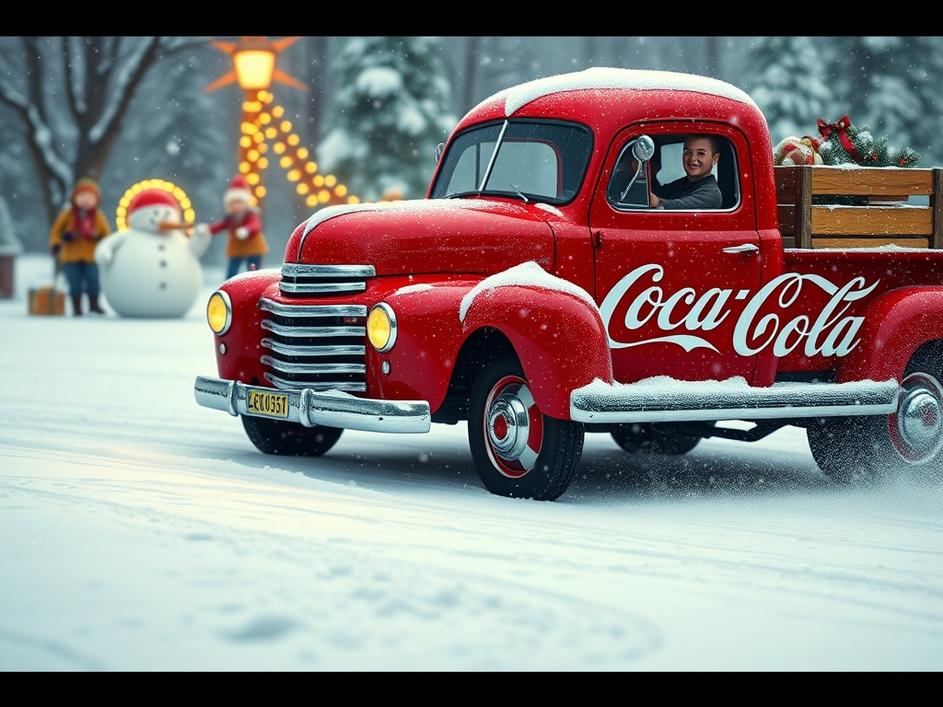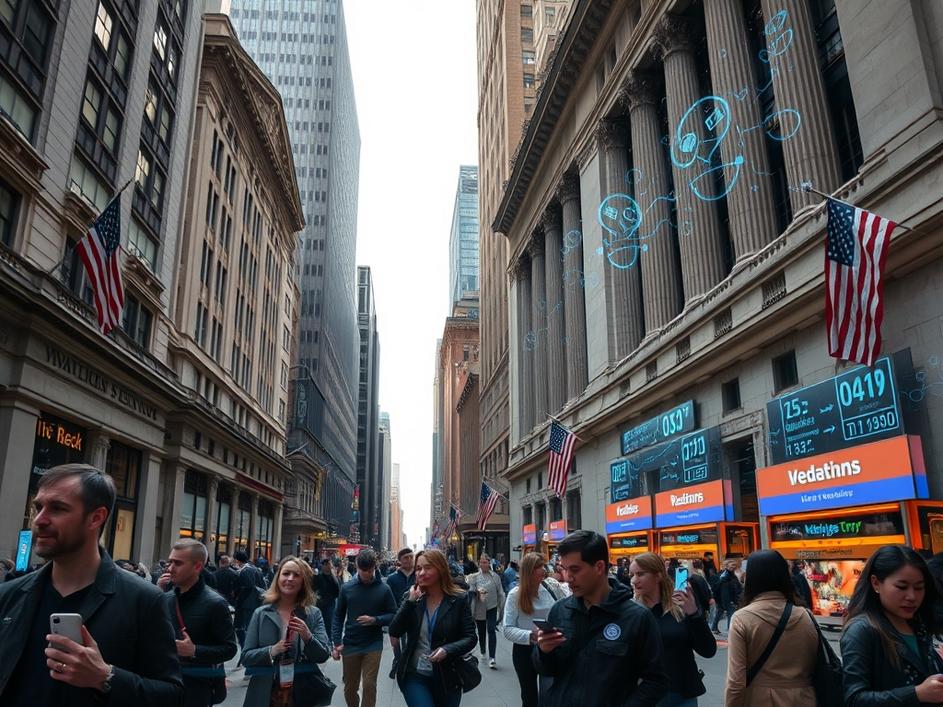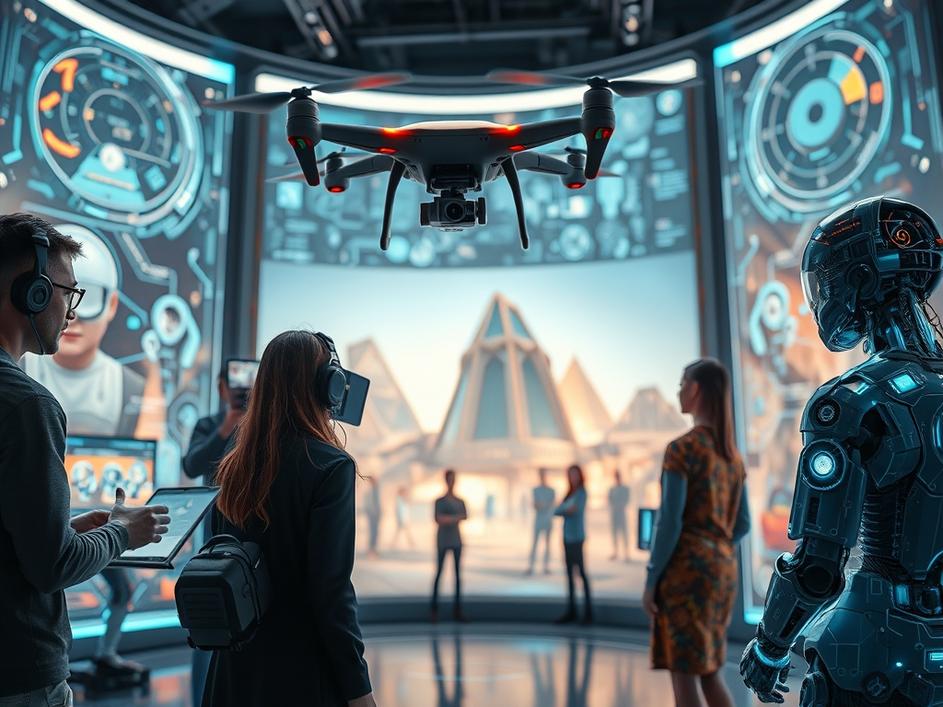


We are a digital agency helping businesses develop immersive, engaging, and user-focused web, app, and software solutions.
2310 Mira Vista Ave
Montrose, CA 91020
2500+ reviews based on client feedback

What's Included?
ToggleThe air is getting colder, stores are twinkling, and the iconic red Coca-Cola trucks are rumbling into our screens. For many, these trucks mean the holiday season has officially arrived. This year, though, there’s a new twist. Coca-Cola has once again leaned into artificial intelligence to craft its festive advertisements. It’s their second run at using AI for these beloved campaigns. On one hand, it’s exciting to see how technology can help create new worlds and visions. It shows a big brand embracing the future, trying out new ways to connect with people. But, as with anything new and high-tech, there’s always a learning curve. This time, some sharp-eyed viewers have noticed little quirks, small bumps in the digital road. These aren’t huge, flashy errors, but subtle oddities that make you look twice. It reminds us that while AI is getting incredibly good, it’s still very much a work in progress, especially when it comes to creative work that needs that human touch. The goal is to bring holiday magic, but sometimes, the magic shows its seams.
What exactly are these glitches? We’re not talking about trucks flying or people disappearing. Instead, it’s more like a subtle misalignment in the digital world. Imagine a truck with too many mirrors, or maybe one wheel that seems just a little off. Sometimes, objects in the background don’t quite make sense together, or perspectives seem a bit wonky. Maybe a character has an extra finger, or a tree branch just ends in a strange way. These are the kinds of visual inconsistencies that even the most advanced AI tools can still produce. It’s not that the AI tried to make an error; it just doesn’t always understand the real-world logic of how things connect and interact. Humans instinctively know what looks “right” because we live in the physical world. AI, despite learning from millions of images, doesn’t have that same grounded understanding. It can mimic, but true comprehension of depth, proportion, and reality is still a frontier. These small missteps show us the current limits of generative AI, especially when tasked with creating scenes that need to feel completely natural and believable. It’s like a very talented artist who occasionally draws something out of proportion without noticing.
So, why do these little glitches matter? After all, it’s just an ad, right? For a brand as huge and iconic as Coca-Cola, every detail counts. Their holiday ads are legendary, known for sparking warmth and nostalgia. When something feels “off,” it can pull people out of that immersive, festive feeling. It’s not about being overly critical; it’s about the subtle impact on brand perception. Viewers might subconsciously pick up on these imperfections, even if they can’t quite pinpoint them. This can lessen the feeling of seamless quality that a brand like Coke works hard to maintain. In an age where digital content is everywhere, consumers are also getting savvier. They can often tell when something looks “AI-generated” even without knowing why. These glitches serve as a public reminder that while AI offers incredible efficiency and speed, it sometimes sacrifices the perfect, polished finish we expect from top-tier brands. It highlights a tension: the desire to innovate with new tech versus the need to maintain an impeccable brand image. For a company built on tradition and consistent quality, these digital missteps become a talking point.
This whole situation makes us think about the difference between human creativity and what an algorithm can do. A human artist, director, or designer brings not just skill, but also intuition, emotion, and a deep understanding of context to their work. They know how to evoke feelings, how to tell a story through subtle cues. AI, right now, is a fantastic tool for generating, compiling, and predicting. It can create complex images based on patterns it has observed. But it doesn’t feel or understand in the way a human does. It doesn’t have common sense. So, while it can generate a truck, it might not “know” why a wheel shouldn’t be slightly distorted or why shadows need to fall consistently. The glitches are a testament to the fact that creativity isn’t just about combining elements; it’s about making those elements resonate with a human audience in a believable way. This isn’t a knock on AI itself, but a reminder that it’s currently a powerful assistant, not a fully independent creative force. It still needs human eyes and human judgment to guide it, refine its output, and catch those moments where its “logic” breaks from our reality.
These AI ad glitches aren’t a sign that generative AI is a failure. Far from it. They’re more like growing pains. Every new technology goes through these stages. Think about early computer graphics in movies – they looked clunky and fake compared to today’s seamless visual effects. AI is on a similar journey. What these incidents do is offer valuable lessons. For brands and studios, it means understanding the current limitations and knowing when to deploy human oversight more heavily. It’s about finding the sweet spot where AI handles the heavy lifting of generation, but human experts provide the critical eye for detail, consistency, and emotional resonance. The future likely involves a hybrid approach: AI speeds up the initial creation, generates many options, and handles repetitive tasks. Then, human artists and editors step in to polish, correct, and infuse the final product with the nuanced artistry only people can bring. This isn’t about AI replacing human creativity, but rather augmenting it. The goal isn’t just “AI-generated,” it’s “AI-assisted perfection.” And these holiday ad quirks are just another step on that path, showing us exactly where the “assist” is most needed.
In the end, Coca-Cola’s AI-generated holiday ads, glitches and all, offer a fascinating glimpse into the evolving world of digital creation. They highlight the incredible progress of AI while also clearly showing its current boundaries. It’s a powerful reminder that while technology can do amazing things, the subtle nuances, the logical consistency, and the emotional resonance that truly captivate an audience often still require the keen eye and intuitive understanding of a human. As AI continues to learn and improve, these small errors will likely become rarer. But for now, they serve as a valuable lesson for everyone working with this technology. We’re not just looking for technically perfect images; we’re looking for images that connect, that tell a story, that feel right. And that “feeling” is something humans are still uniquely good at. So, as you see those red trucks this holiday season, remember that even in the most high-tech creations, a little bit of human magic is still the secret ingredient for truly heartwarming cheer.



Leave a reply